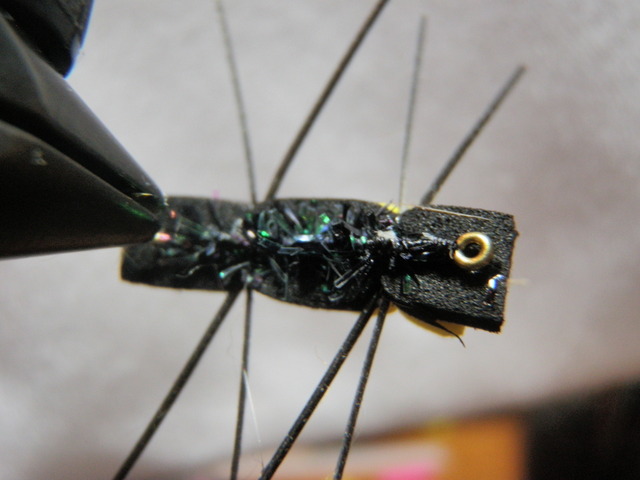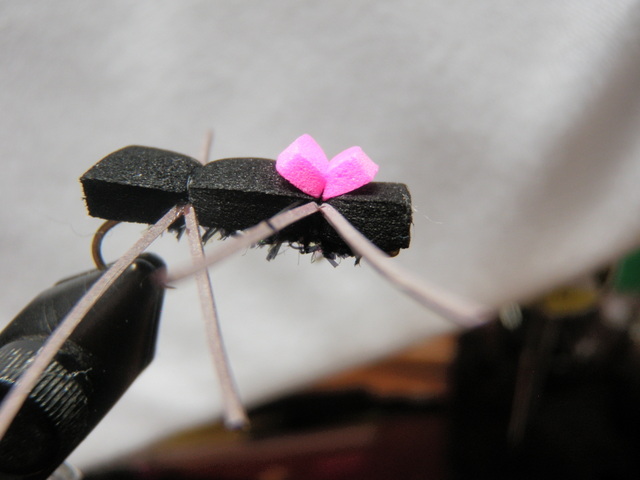The Chernobyl ant is another of my favorite large attractor flies that I use as a top fly indicator when using the dry/dropper approach. The large foam ant is very buoyant and the bright indicator foam makes it visible in most situations. There are also times when the fish go for this clump of foam as if it represents the last meal. Unfortunately there are other times when the Chernobyl ant draws refusals and in this case it serves as a distraction from the trailing nymph.
I needed to replenish my stock of this frequently used fly so I decided to take some lessons from the pool toy construction. First I went to YouTube and viewed several video demonstrations of tying the Chernobyl ant. They all seemed to use two layers of foam, but I prefer one layer with pearl chenille wrapped around the hook beneath the first layer. The irridescent pearl chenille imitates the underside of many natural beetles that I’ve observed, and I feel this is a triggering characteristic. I could probably wrap the pearl chenille beneath two layers of foam, but I view two layers as making this fly unnecessarily difficult to tie.
Two aspects of the fly that I attempted to improve upon in my latest tying efforts are the legs and the tendency of the foam to spin around the hook after several catches. I learned from the pool toy the importance of having a base on the hook shank to attach the foam to, so I made sure to wrap the pearl chenille over the hook shank at the points where I tied the foam to the hook. In addition I used a stronger and heavier thread that allowed me to apply significantly more pressure on my downward locking wraps on the foam. And the last step I took was to apply Sally Hanson teflon clear nail polish to the front and rear wraps. The teflon product is quite thin and soaks into the thread wraps. On the flies I’ve completed I’ve tested the contact of the body to the hook, and they seem to be much more solid than my previous efforts.
For the legs I experimented with finer more flexible materials and left the legs longer. My theory is that the longer flexibile legs will create more movement and thus attract more fish. I can always cut back the legs on the stream if I feel they are a deterrent to fish. My favorite leg material so far is a product called Sili Legs, and I’ve made several versions with barred legs and more with black legs. Another pool toy lesson that I’ve applied to my new Chernobyl ants is the usage of bright pink foam as an indicator in addition to the bright yellow I used on the past.
I plan to create at least 20 new and improved Chernobyl ants as we head into the 2013 season. Stay tuned to this blog to find out how this experiment plays out.


